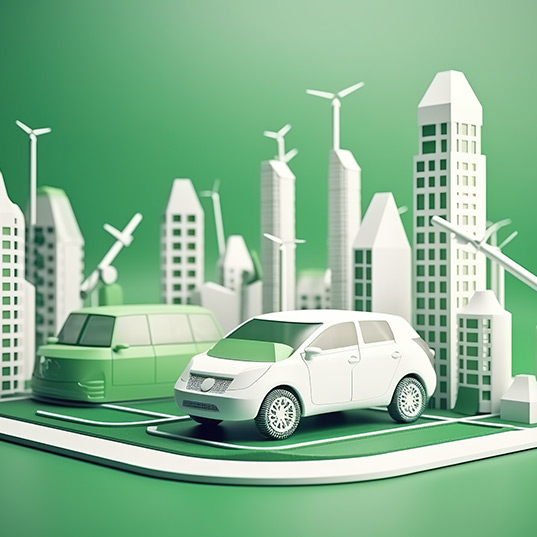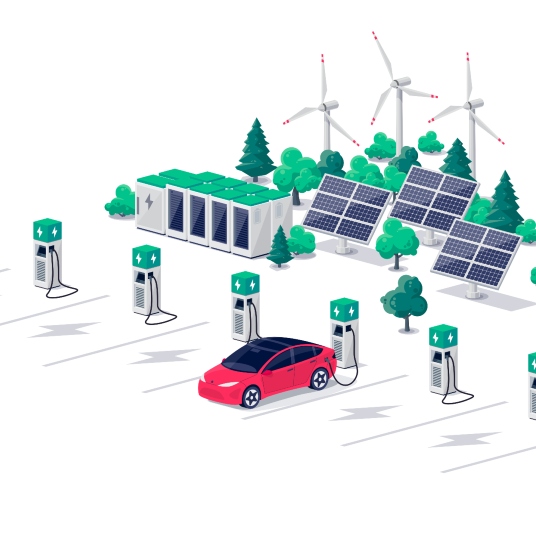Picture this: in the heart of a bustling European metropolis, the boulevards normally overrun by combustion vehicles are turned over to a vibrant, but more peaceful, scene of people walking. In the place of noisy engines and impatient horns, the soft hum of bicycles and electric motors fills the air. City residents move around while enjoying a healthier environment and contributing to the reduction of the carbon footprint, all thanks to more sustainable, efficient and responsible transport.
The scene we have just described is not a dream, it’s the precise goal of European Mobility Week: promote and raise awareness about sustainable urban mobility.
What will I learn from this article?
🚲 European Mobility Week 2023: the importance of moving around efficiently
Every day, millions of people travel miles to work, the supermarket or to collect their children from school. How they do this, how they move about, matters, since transport consumes a third of all final energy output in the European Union, most of which is produced from oil. As such, the transport sector is responsible for a large proportion of greenhouse gas emissions, thus contributing significantly to climate change.
“Transport consumes a third of all final energy output in the EU”
 If the global energy crisis has taught us anything over recent months, it is that our society still functions through finite energy sources, the shortage of which causes hikes in the prices we all have to pay. The war in Ukraine has shown how dependent many countries are on Russian gas and oil, and has obliged governments to take measures to incentivize their peoples to reduce energy use.
If the global energy crisis has taught us anything over recent months, it is that our society still functions through finite energy sources, the shortage of which causes hikes in the prices we all have to pay. The war in Ukraine has shown how dependent many countries are on Russian gas and oil, and has obliged governments to take measures to incentivize their peoples to reduce energy use.
This is the theme chosen by the European Commission for its 2023 European Mobility Week: Energy Efficiency. The aim is to raise awareness among the population to make more efficient use of transport means.
As the official website of the event indicates, energy poverty and mobility are increasing due to the greater costs incurred by citizens and businesses across Europe. To reduce the impact, it points out that it is crucial we transform our transport system and replace fossil fuels with renewable energy sources, at the same time leading Europe toward creating a climate-neutral future by 2050.
“The aim is to raise awareness among the population to make more efficient use of transport means to limit energy consumption”
As every year, European Mobility Week invites us to explore ways of ensuring that our mobility habits contribute to these collective efforts. This initiative, which will be held from 16 to 22 September throughout Europe, took place for the first time in 1999. Its main aim is to raise awareness among citizens about the importance of adopting more sustainable transport means, like public transport, cycling and even walking.
It is not only arguing for a change in how people move about, but also seeks to improve air quality and reduce greenhouse gas emissions, thus contributing to the fight against climate change. Over seven days full of activities in dozens of cities, there will be the opportunities to discover innovative solutions for reducing the environmental impact of our daily travel needs.
New urban mobility
Electric nano-cars and removable batteries: innovations driving sustainable mobility
 With more than two decades of experience to call upon, European Mobility Week has witnessed technical and technological advances that have driven urban mobility toward sustainability. Electric vehicles are, undoubtedly, one of the protagonists of this new world. It is worthwhile remembering how an electric car is not by itself clean. It is only clean if the electricity it uses is renewable. If the electricity is produced from coal, the more electric cars operating off it, the more emissions there are.
With more than two decades of experience to call upon, European Mobility Week has witnessed technical and technological advances that have driven urban mobility toward sustainability. Electric vehicles are, undoubtedly, one of the protagonists of this new world. It is worthwhile remembering how an electric car is not by itself clean. It is only clean if the electricity it uses is renewable. If the electricity is produced from coal, the more electric cars operating off it, the more emissions there are.
As we have already mentioned in this article, there are more and more people convinced of the advantages of electric cars. 2022 was the best year so far: zero-emission cars came to 10% of all new cars worldwide. According to The Wall Street Journal, 7.8 million electric cars were sold last year, 68% more than the sales recorded in 2021.
Electric micro-cars have also become an affordable alternative for those who want to move to zero-emissions mobility. There are models such as the Silence nano-car, which opens the door to the urban mobility of the future by being comfortable, safe and sustainable, as well as easy to park due to their smaller size.
These vehicles include a novelty which avoids one of the traditional obstacles to electric mobility: the expansion of the recharging network. Silence nano-cars function through a removable battery: you can take it home and charge it from any household socket.
These removable batteries have given rise to the creation of Battery Stations, battery exchanges at which users can leave their flat batteries and pick one up that is 100%-charged in an operation that lasts just 30 seconds. A new solution which solves another sticking point: recharge time.
We are witnessing a significant change toward sustainable urban mobility. Events such as European Mobility Week 2023 allow us to celebrate the progress made toward less-polluting transport, which helps us to reduce our environmental impact and advance to a climate-neutral future.
Sources: